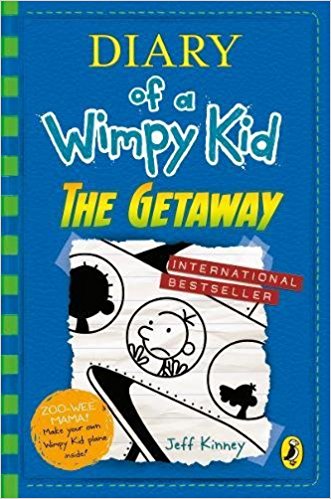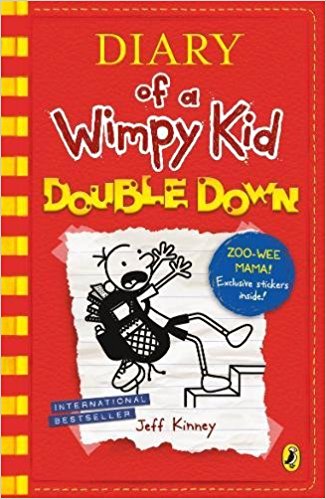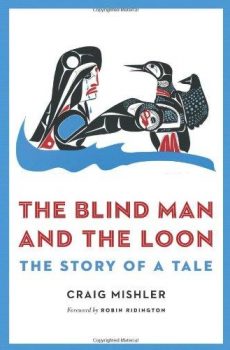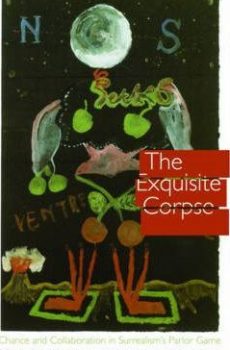
Diary of a Wimpy Kid: The Getaway (book 12) Hardcover
399.00₹ 349.00₹
Praise for Jeff Kinney:
‘The world has gone crazy for Jeff Kinney’s Diary of a Wimpy Kid’ – Sun
‘Kinney is right up there with J K Rowling as one of the bestselling children’s authors on the planet’ – Independent
‘The most hotly anticipated children’s book of the year is here – Diary of a Wimpy Kid’ – Big Issue
‘Hilarious’ – Telegraph.

Double Down (Diary of a Wimpy Kid)
299.00₹ 250.00₹
The pressure’s really piling up on Greg Heffley. His mom thinks video games are turning his brain to mush, so she wants her son to put down the controller and explore his creative side’.
As if that’s not scary enough, Halloween’s just around the corner and the frights are coming at Greg from every angle.
When Greg discovers a bag of gummy worms, it sparks an idea. Can he get his mom off his back by making a movie…and will he become rich and famous in the process? Or will doubling down on this plan just double Greg’s troubles?

European Vernacular Literacy
1,590.00₹ 1,290.00₹
In this major new text, Joshua Fishman charts the rise of vernacular literacy in Europe, and the major social, economic, religious, political, demographic, educational and philosophical changes that attended it. Following the story up until the present day, the book examines the people who became leaders of the growth of vernacular literacy in Europe, and looks at how European colonizers viewed vernacular literacy efforts in their current and former colonies. Looking forward, Fishman discusses how new technology affects vernacular literacy both now and in the present, and whether developments in voice and visual media mean that vernacular literacy will be less important to future generations than it is to us. ‘European Vernacular Literacy’ is not only a review of well-known facts and theories of the rise of vernacular literacy in Europe, but an attempt to reintegrate and rethink them along new and provocative lines, meaning that the book will be of interest not only to students of literacy and history but also to scholars interested in Fishman’s latest contribution to sociolinguistics.

In the Shadows of a Fallen Wall
1,390.00₹ 995.00₹
Growing up, what Sanford Tweedie knew about East Germany was basically . . . nothing. West Germans were our friends; East Germans, the enemy. In 2000, somewhat better informed, Tweedie took advantage of a Fulbright Scholarship to move his family to the eastern German town of Erfurt for the academic year. Far from home and the familiar, with temporary status and a tenuous grasp of the language, he and his wife were curious to see how they would function shorn of all the rules that governed their daily lives—housing, food acquisition, transportation, and even basic communication. As soon as their taxi delivered them to their grim tan and concrete Soviet-vintage apartment building, they knew their education had begun.
Learning about life in the former East Germany, amid the feverish embrace of Western culture and the tenacious legacy of a totalitarian past, Tweedie comes to understand the deeper cultural assumptions through which Americans view the larger world. Part travelogue, part history, part cultural critique, all thoroughly engrossing, the story of his yearlong experience is one of dislocation and accommodation, making a German town his own and now ours.

Test Ride on the Sunnyland Bus
1,390.00₹ 1,090.00₹
Test Ride on the Sunnyland Bus chronicles the story of an American family against the backdrop of one of the civil rights movement’s lesser-known stories. In January 1957, Joseph Spagna and five other young men waited to board a city bus called the Sunnyland in Tallahassee, Florida. Their plan was simple but dangerous: ride the bus together—three blacks and three whites—get arrested, and take their case to the U.S. Supreme Court. Fifty years later Ana Maria Spagna sets off on a journey to understand what happened and why.
Spagna travels from her remote mountain home in the Pacific Northwest to contemporary Tallahassee, searching for the truth of the incident and her father’s involvement. Her journey is complicated by the fact that her father never spoke of the Sunnyland experience and died unexpectedly when she was eleven. Seeking out the other bus riders, now in their seventies, Spagna tries to make sense of their conflicting stories. Her odyssey becomes further troubled by the sudden diagnosis of her mother’s terminal cancer.
Winner of the River Teeth Literary Nonfiction prize, Test Ride on the Sunnyland Bus deftly weaves cultural and personal history, memoir, and reportage in this fascinating look at a family and a nation’s past.

The Blind Man and the Loon
3,490.00₹ 2,395.00₹
The story of the Blind Man and the Loon is a living Native folktale about a blind man who is betrayed by his mother or wife but whose vision is magically restored by a kind loon. Variations of this tale are told by Native storytellers all across Alaska, arctic Canada, Greenland, the Northwest Coast, and even into the Great Basin and the Great Plains. As the story has traveled through cultures and ecosystems over many centuries, individual storytellers have added cultural and local ecological details to the tale, creating countless variations.
In The Blind Man and the Loon: The Story of a Tale, folklorist Craig Mishler goes back to 1827, tracing the story’s emergence across Greenland and North America in manuscripts, books, and in the visual arts and other media such as film, music, and dance theater. Examining and comparing the story’s variants and permutations across cultures in detail, Mishler brings the individual storyteller into his analysis of how the tale changed over time, considering how storytellers and the oral tradition function within various societies. Two maps unequivocally demonstrate the routes the story has traveled. The result is a masterful compilation and analysis of Native oral traditions that sheds light on how folktales spread and are adapted by widely diverse cultures.

The Exquisite Corpse
3,595.00₹ 2,290.00₹
In a parlor game played by the Surrealist group—the foremost avant-gardists of their time—participants made their marks on the quadrants of a folded sheet of paper: a many-eyed head, a distorted torso, hands fondling swollen breasts, snarling reptilian-dog feet descending from an egg-shaped midsection. The “Exquisite Corpse,” as it was called, is still very much alive, having found artistic and critical expression from the days of the Surrealists down to our own. This method has been used in collective artistic protocols as the “rules of engagement” for experimental art, as a form of social interaction, and as an alternative mode of critical thinking.
This collection is the first to address both historical and contemporary works that employ the ritual of the cadavre exquis. It offers a unique overview of the efforts of scholars and artists to articulate new notions of crossing temporal and spatial boundaries and to experience in a new way the body’s mutability through visual, auditory, tactile, and kinesthetic frames. Bringing together diverse writers from across disciplinary boundaries, this volume continues the cultural and methodological innovations that have unfolded since the first days of the “Exquisite Corpse.”








